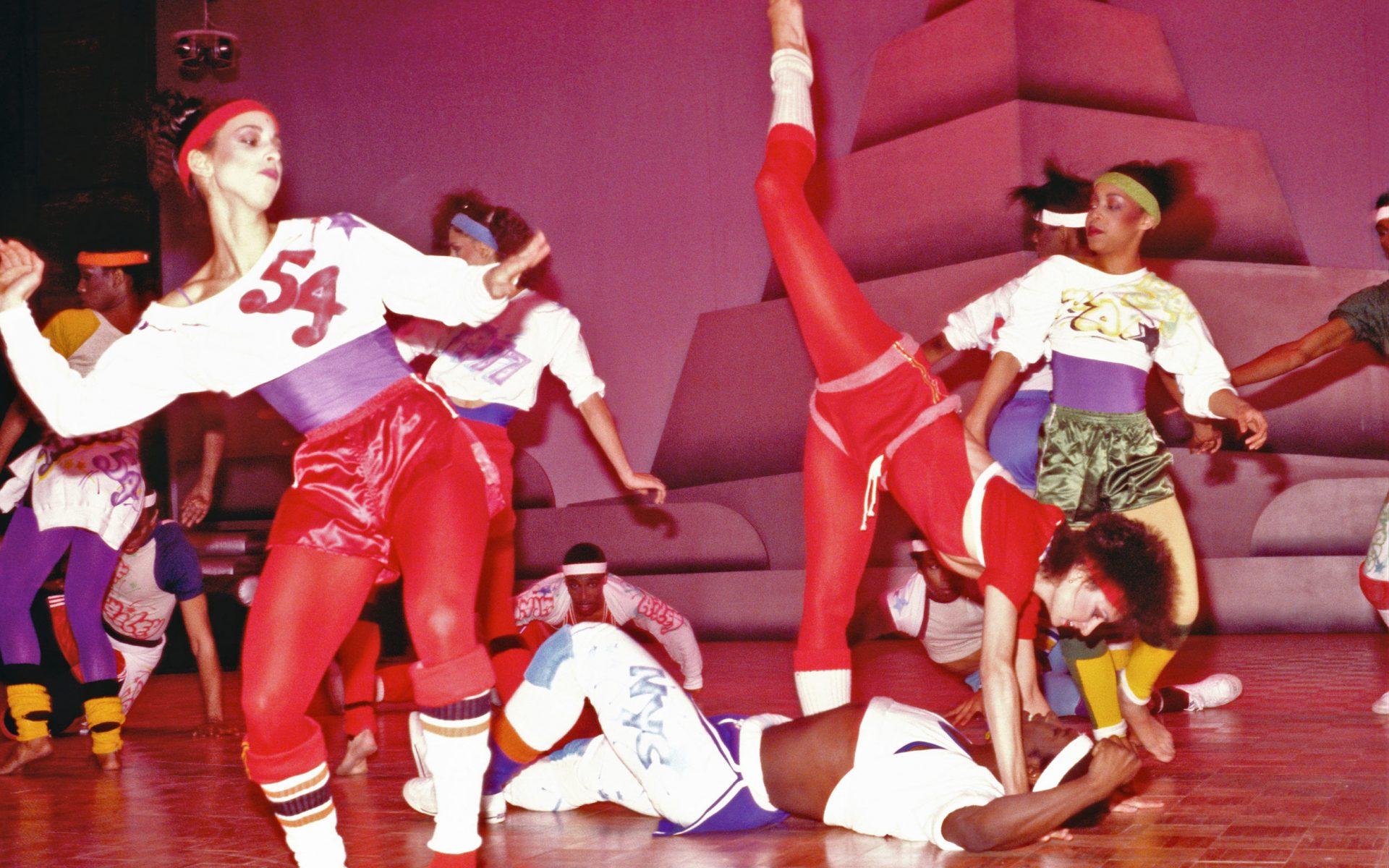

How Studio 54 Forever Changed New York’s Creative Scene
A new exhibition at the Brooklyn Museum offers a fascinating look at the club’s influence on fashion, music, and social politics
After the highly successful five-month run of “David Bowie Is” at the Brooklyn Museum in 2018, the museum’s then-director of exhibition design, Matthew Yokobosky, knew his next project would focus on the late 1970s. “I began to realize Studio 54 had become an umbrella term to define the fashion and culture of its era,” says Yokobosky, who now serves as the senior curator of fashion and material culture, standing next to a replica of the white horse Bianca Jagger rode during her birthday bash at the legendary club in 1977. “So many fashion designers and editors these days have Studio 54 on their mood boards as a reference point for the ‘70s’ visual scope.”
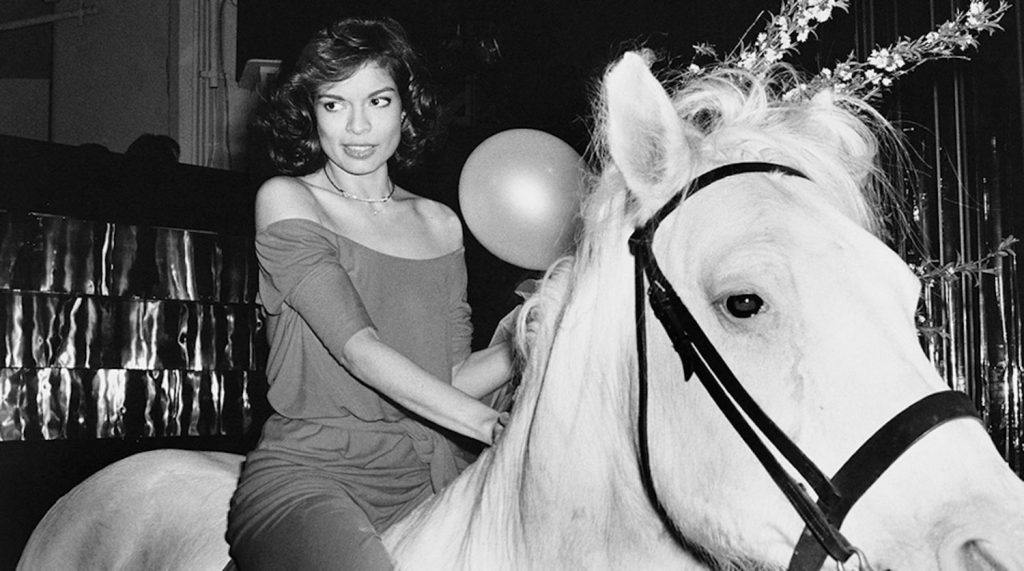
The life-size horse is just one of the 650 objects on view in the Brooklyn Museum’s new exhibition “Studio 54: Night Magic,” which chronicles the cultural impact the Studio—as its regulars called it—cast on fashion, music, and social politics. Co-owned by Ian Schrager and Steve Rubell, the club, which was located at 254 West 54th street at a venue built as Gallo Opera House in 1927, was only in operation for 33 months between 1977 and 1980, buts its aura is lasting.
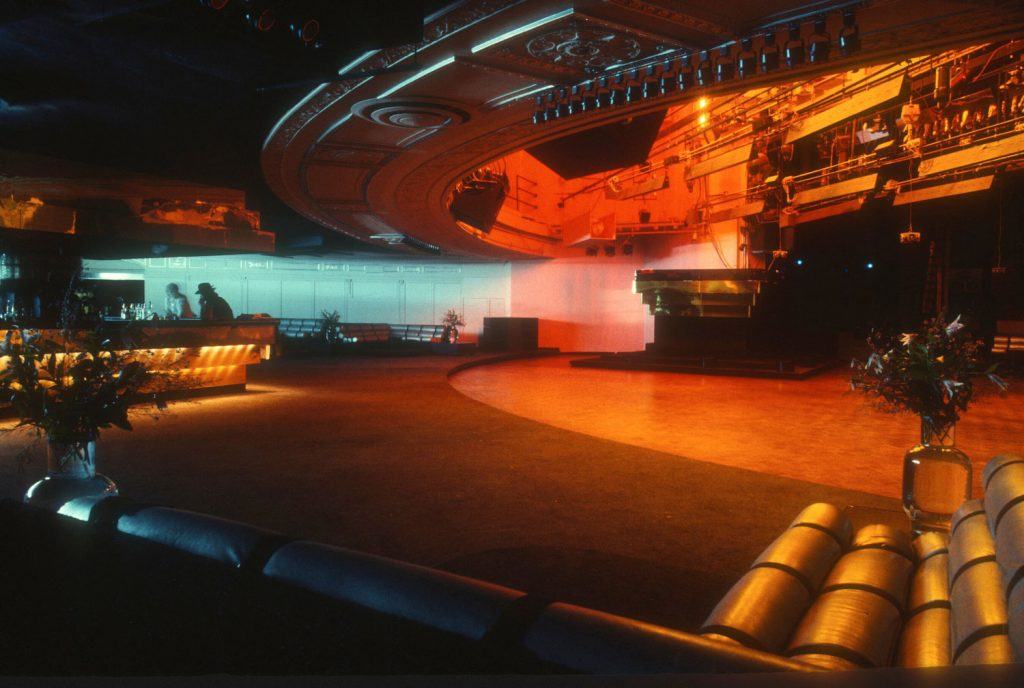
Creating the exhibition was a herculean task, with Yokobosky interviewing over one hundred individuals affiliated with it. His research took him as far as the Yves Saint Laurent Museum in Paris, Fiorucci headquarters in London, Bvlgari archives in Rome, and finally Los Angeles, where he visited Elizabeth Taylor Archives.
Recommended: What Art Insiders Would Take Home from the Armory
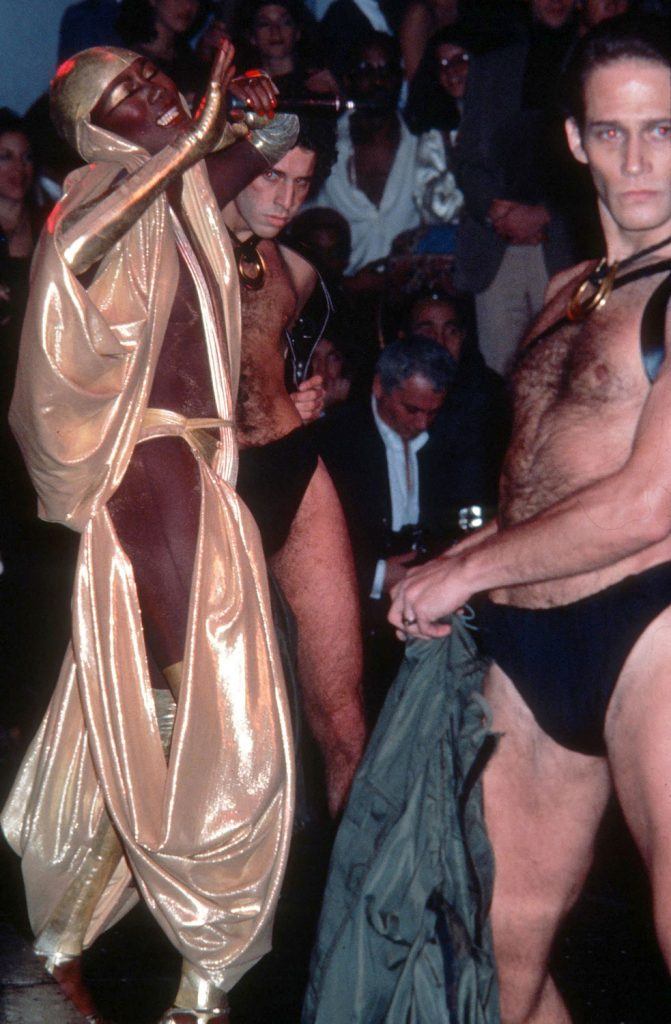
The result is a dizzying display featuring photography, clothing, jewelry, film, archival ephemera, and artwork. The museum’s fourth floor rotunda has been designed to resemble the Studio’s soaring, 84-foot high fly space, an area above the ceiling that would house flying scenery, and, according to Yokobosky, “puts people into right mood for what’s to come.”
Fittingly, a DJ set by Wayne Scott imbues the space with disco hits that permeated the club’s dance floor, from Donna Summer’s “Love To Love You Baby” and Heatwave’s “Boogie Nights.”

Spread across adjacent east galleries, the chronologically-narrated tale of the nocturnal temple not only grasps a crucial time in American history bookended by the Vietnam War and AIDS pandemic, but also suggests an interpretation of contemporary tropes, such as social media, selfie culture, and safe spaces.
Besides its immense impact on fashion and music, as the exhibition emphasizes, the club’s alluring myth still persists today thanks to limited documentation of its legendary celebrity-ridden parties, where there were no smart phones or Instagram stories, but instead only paparazzi snaps and professional photographers, which are all on view across the show.
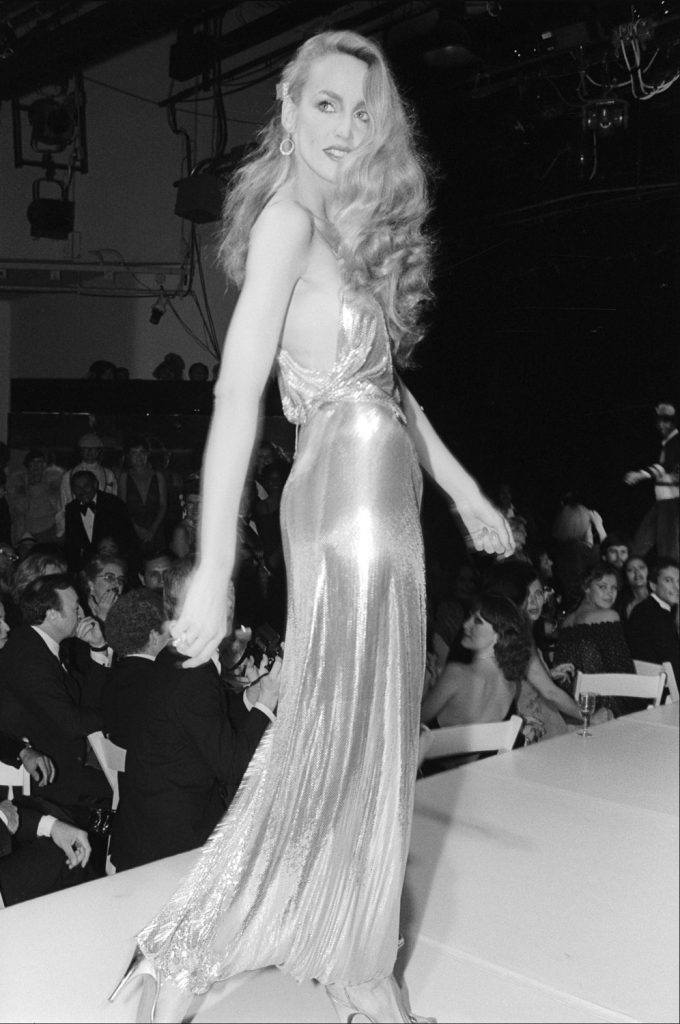
With a sense of documentarian intimacy, photographs by Anton Perich, Ron Galella, Allan Tannenbaum or Hasse Persson are sprinkled amongst iconic ensembles from the time like Halston dresses, Norma Kamali coats, and Larry LeGaspi unitards, which eventually inspired Rick Owens’s Fall 2019 collection. The Studio’s famously exclusive red velvet rope was an obstacle to many; however, inside, where topless busboys in Ronald Kolodzie-designed mini tennis shorts served cocktails, the crowd embraced sexual positivity.
Similar to its grittier Downtown counterparts such as The Anvil or Mineshaft, Studio 54 was a safe space for queer artists, performers, designers, and musicians who found affirmation, connection, and inspiration under radiant lights and tantalizing disco rhythms. Transporting its viewers back into a different New York when rent was low yet crime was prevalent, the exhibition balances romanticism of nostalgia with intricate research on social dynamics of the ‘70s, articulating on politics of escapism and joie de vivre.
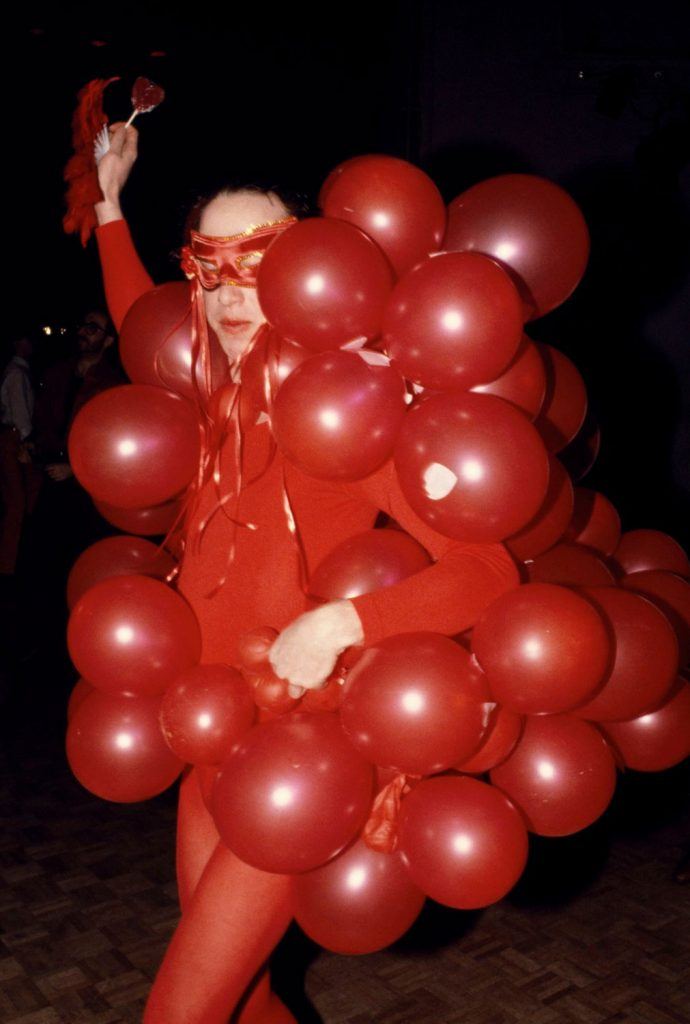
Pivotal nights from the club’s history capture the hedonism, glamour and frenzy of the venue. Highlights on view include the invitation Yves Saint Laurent sketched for Steve Rubell for launch of his legendary perfume, Opium, on September 20, 1978 and the sautoir Burmese sapphire Bvlgari necklace Elizabeth Taylor wore for the Martha Graham benefit on May 21, 1979.
Between Ricard Bernstein’s cardboard masks of Grace Jones or Liz Taylor and Andy Warhol’s screen print paintings of a complimentary drink ticket (which he gifted to regulars like Halston or Bianca Jagger at a Christmas party), one witnesses the prompting creative stimuli, which Yokobosky noted, “proliferated from the Studio’s walls.”
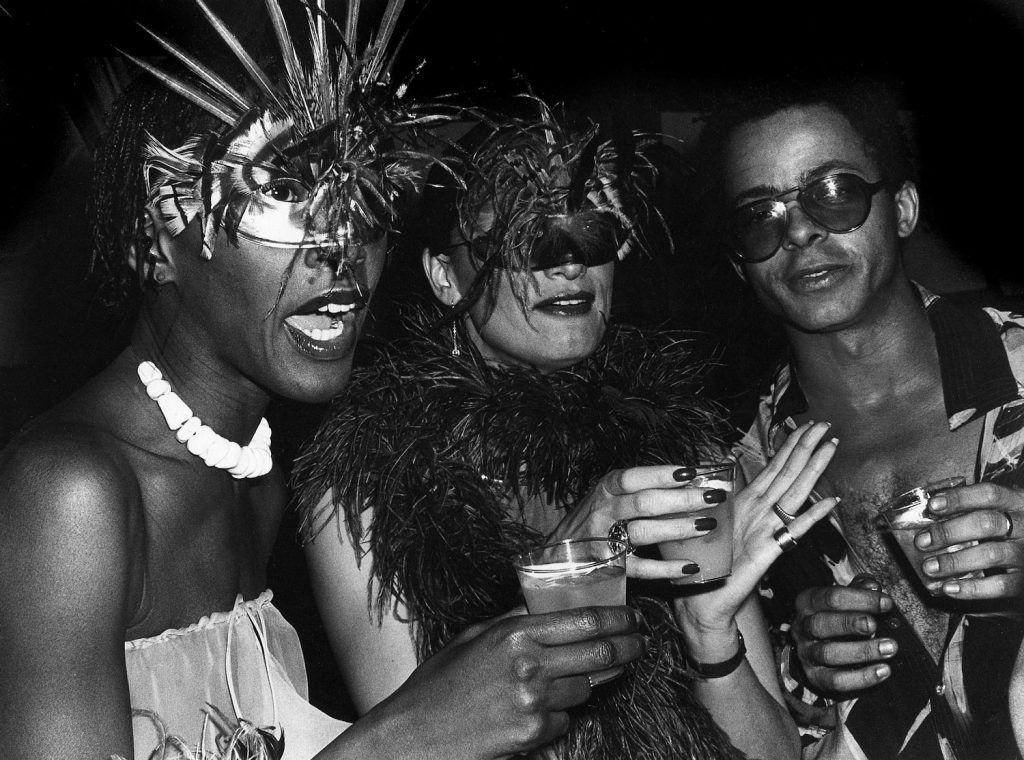
The must-see exhibition joins the museum’s long trajectory of marking connecting tissues between icons of visual culture and sociopolitical dynamics through highly-attended extravaganzas at the museum, such as Killer Heels: The Art of the High-Heeled Shoe (2014) and The Rise of Sneaker Culture (2015).
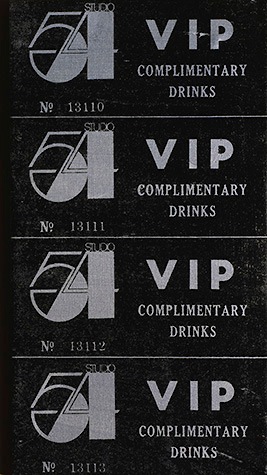
Studio 54: Night Magic is open to public at the Brooklyn Museum through July 5, 2020. (The museum announced late Thursday that it was temporarily closing over concerns about the coronavirus.)






